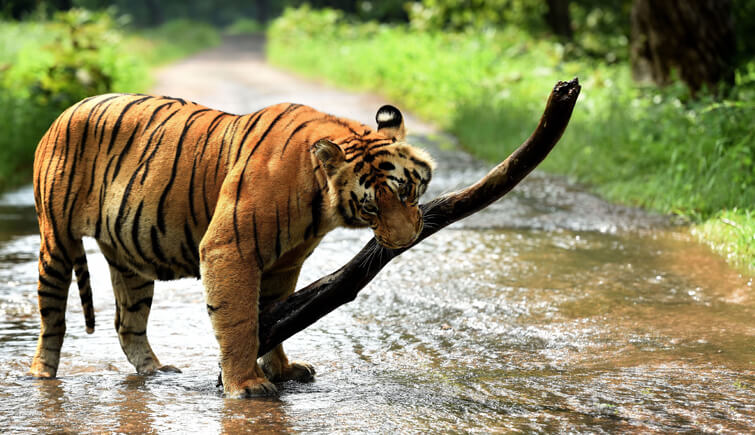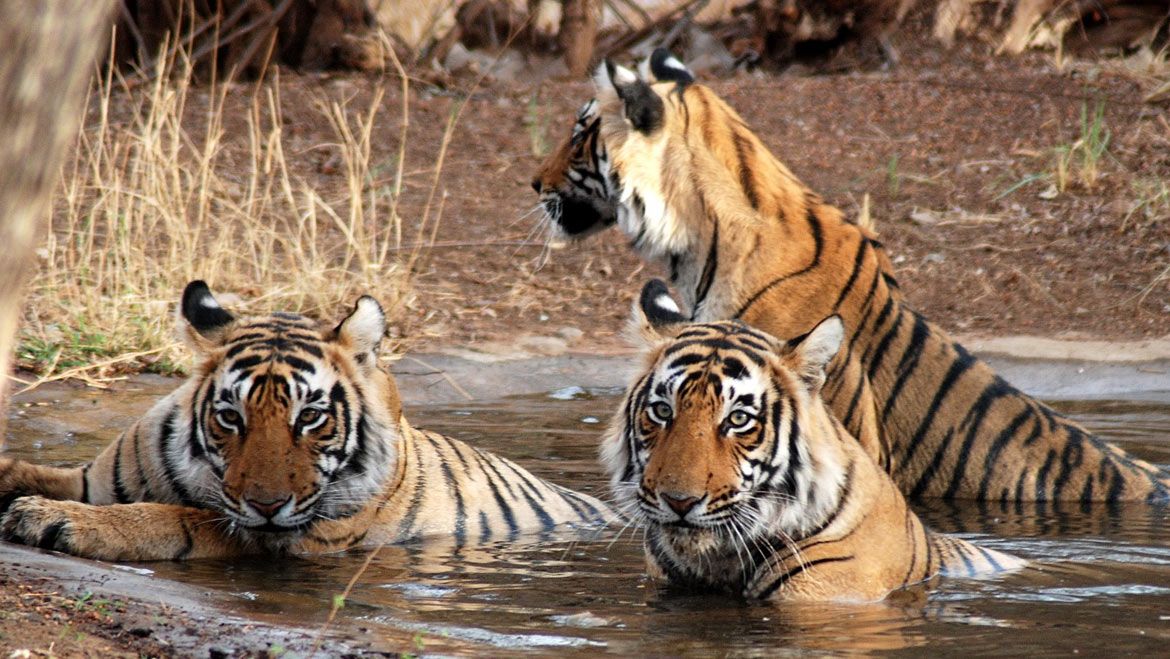The recent news of the death of the Tiger in Satkosia Tiger Reserve on November 14 has triggered a debate about the relocation project of tigers in India. The incident of 14th November comes just weeks after another relocated Tigress was tranquilised after she killed two humans.
In Case You Didn’t Know

Representational Image
The carcass of a male Tiger, who was transferred from Kanha National Park in Madhya Pradesh, was found dead in the Satkosia Tiger reserve on November 14th. This comes as the second case of tiger death in 3 weeks, raising questions about the success of the Inter-state Tiger Transfer Project.
The Heart of The Matter

Representational Image
The Tiger MB2 was transferred from Kanha National Park under the inter-state Tiger Transfer Project and MB2 was one of the six tigers that were to be sent to Odisha. Before MB2, another Tiger transferred to Odisha was found dead in the Satkosia Tiger Reserve. The authorities claimed that the tiger MB2 had died due to a maggot-infested wound in the dorsal neck. However, initially, the officials arrested 4 alleged poachers in the case of death of MB2. The death of the second transferred tiger raises some serious questions about the transfer project. Wildlife activists asked the forest officials as to why a tiger of the different gene pool was introduced in Odisha whoso tigers possess a different and unique gene pool. The 26-crore project between the state and the centre has been halted for now and authorities are trying to process information and reach to conclusive evidence.
What is Inter State Tiger Transfer Project?

The inter-state tiger transfer project was started to populate the other tiger reserves in India with relatively less tiger population. Following the wipeout of tiger population in Sariska Tiger reserve in 2004 and Panna Tiger reserve in Madhya Pradesh in 2009, the state and centre decided to populate other tiger reserves to main a balanced ecological system. Another major reason for inter-state tiger transfer project can be attributed to overpopulation in certain tiger reserves, which leads to tiger migrating to human-populated areas. The first participant of the project was Kanha National Park and Tiger Reserve in Madhya Pradesh who were to send 6 tigers to tiger reserves in Odisha which has seen a decline of tiger population from 12 to 2. Expected to be a success, this project is yet to serve its purpose. With the death of the transferred tigers, authorities are in no hurry to continue with the transfer of other tigers.
Reason for Death of Transferred Tigers

Representational Image
MB2 was the second tiger to be transferred. Before him, Tigress Sundari was transferred to Satkosia Tiger Reserve, who killed two local villagers and she had to be tranquilised and kept in an enclosure. The activists blame the authorities for transferring tiger of the different gene pool from the one that exists in Odisha. Activists also believe that there was no planning behind the implementation of the project rather it was a political gimmick to boast in public. As per National Tiger Conservation Authority’ guideline, a transfer should be processed only after the current genetic knowledge and connectivity of corridors. These guidelines were meant to effectively deal with the cases of tiger straying in the human-populated area. However, in case of Madhya Pradesh and Odisha, tigers from both the states have a different gene pool. The transfer of Tigers from Kanha National Park in Madhya Pradesh to the danger zone of the Satkosia Tiger Reserve in Odisha was done against the guidelines set by the NTCA. Wildlife Activists was seen arguing on the above-mentioned point and he seeks to move the court to ask for a probe in the case.
Who to Blame for Tiger Relocation Failure?

Representational Image
While the authorities initially arrested four alleged poachers in the case of death of Tiger MB2, it was later revealed that the tiger died due to a maggot-infection on the neck. The other case of translocation also didn’t go as expected after Tigress Sundari attacked two villagers. However, there has been another case of death of a translocated tiger. Tiger Mahavir was transferred to Satkosia Tiger Reserve (STR) in June this year after the STR’s proposal was approved by NTCA in October last year. Sundari also had to be contained. Three cases of failure of relocation raise the question as to who should be blamed for the failures. The NTCA has clearly stated that the translocation happened in violation of its guidelines. Authorities of STR are yet to comment on the issue of these failures. However, it seems that the project would be shelved for a while before a constructive plan is in place for relocation.
Is Relocation a Bad Idea?

Relocation in itself is not a bad idea. In September, when Gir National Park witnessed the death of 23 Asiatic Lions, a point was raised about relocation. In 2013, Supreme Court had directed Gujarat Government, led by the then Chief Minister Narendra Modi, to transfer some of its Lion Population to other states in order to stop the overpopulation in Gir National Park. Although, an endangered species, big cats are needed to be provided with large areas and abundant animals to hunt in order for them to survive. Having even 15 tigers can prove fatal as the tigers migrate in order to look for new territory and prey.
What Lies Ahead?

The Tiger Transfer project seems to be shelved as of now and the authorities are still trying to determine the cause of such failures. We hope in future we get to see a proper roadmap for the transfer of big cats to other reserves.






 3 Nights / 4 Days
3 Nights / 4 Days  3 Nights / 4 Days
3 Nights / 4 Days  13 Nights / 14 Days
13 Nights / 14 Days  10 Nights / 11 Days
10 Nights / 11 Days 












